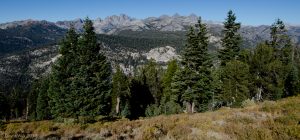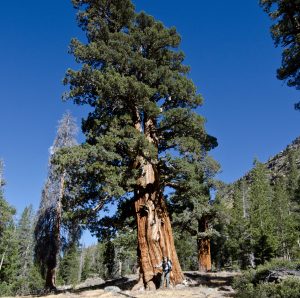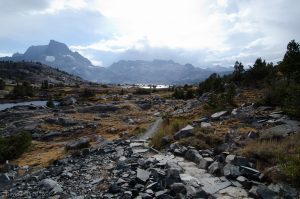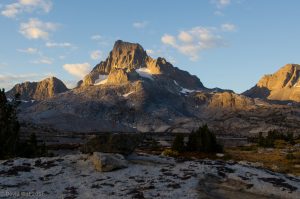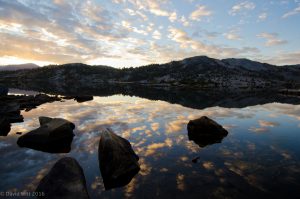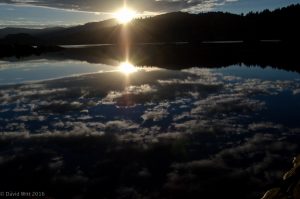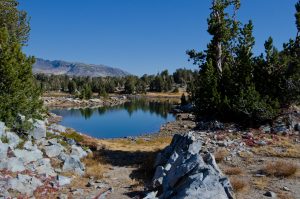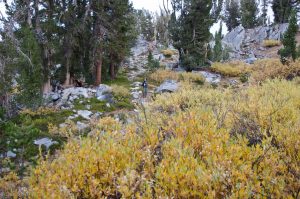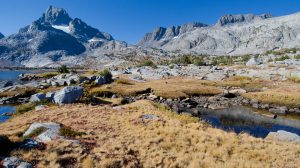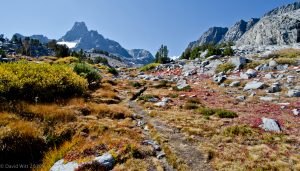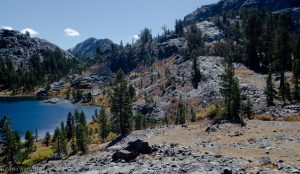In the past eleven months we have seen the Paris Agreement (United Nations Framework Convention on Climate Change), the Antarctic Protection Agreement (Commission for the Conservation of Antarctic Marine Living Resources) while at the same time the variety of environmental disasters from species extermination to melting ice caps has continued apace. American anti-environmental politics in this election cycle has deteriorated from absurd to farcical (or vice versa). The U.S. Fish and Wildlife (dis)Service continues to keep species such as the American Pica from receiving Endangered Species Act Protection. Given all this, months ago I quit making editorial comments. What is the radical natural history writer to do?
Give up on politics at the moment for a return into the heart of wild nature.
In September, I took a break from my primary research on Ernest Thompson Seton to assist in research on John Muir. For decades fellow radical naturalist Bob Hare has been inspired by Muir’s accounts of the Sierra Nevada, and for several years has been systematically following Muir’s routes through the Range of Light. See: Wilderness Adventures with Bob Hare.
I occasionally join him in the adventure, including this year for a few September days exploring the Ansel Adams Wilderness (west of Mammoth Lakes, California). One of our destinations this year: Lake Catherine, a jewel of a lake, outstanding even by the standards of a region known for its outstandingly gorgeous lakes.
Venturing from Taos, New Mexico, to Sacramento, California, thence across Yosemite and southward to Mammoth Lakes, we packed supplies and gear for a six- night trip.
Sept 28. From Minaret Vista (near Devil’s Postpile National Monument) we looked out over the San Jauquin watershed to Mt Ritter and Banner Peak (the high points right of center) the stone pillars below which Lake Catherine glistens in the sunshine or glowers beneath storm clouded sky (although first we had to get there).
We are both photographers so stopped frequently to pose in front of trees, on trails, etc.
We took so long to reach Thousand Island Lake (Banner Peak and Mt. Davis in the distance above the lake) that I thought we had taken a wrong turn. Our path-finding skills have not diminished, but more than forty years on from our first backpacking trips together, either we walk more slowly or the upward tilt of the trails has increased.
Finally made camp as the wind gradually increased—a harbinger of what was to come.
Sept 29. Morning sunrise photography occupied us for some time.
That morning we headed north and uphill intersecting the Pacific Crest Trail for a hike over Island Pass and to the overlook of Waugh Lake in search of places from where Muir made sketches. Late afternoon we returned through an unrelenting windstorm that did not cease for the remainder of our trip.
Sept. 30 From our camp at Thousand Island Lake we hiked up North Glacier Pass on the north side of Banner to where it became a Class 2 climb—talus mixed with large boulders.
After nearly having been blown off the rocks several times we reached the top of the pass and the unforgettable view of Lake Catherine. (I wonder for whom the lake was named?)
Bob continued down to the lake and beyond in search of another Muir sketch site (detailed in his blog). At 1:00pm, he promised to return in 2 ½ hours. I retreated over a hundred feet back down in the pass to get out of the worst wind, covering myself with a poncho as wind shelter. He appeared above me at exactly 3:30pm.
Oct. 1. We still had half the planned trip remaining, but high elevation snow and non-stop wind changed our plan. We headed down to Garnet Lake.
From Garnet Lake, we climbed down through a hundred feet of rock gully back into the San Jauquin valley finding a long abandoned (and occasionally entirely absent) trail for our return. Our research continued for a few more days—a story for another time.


